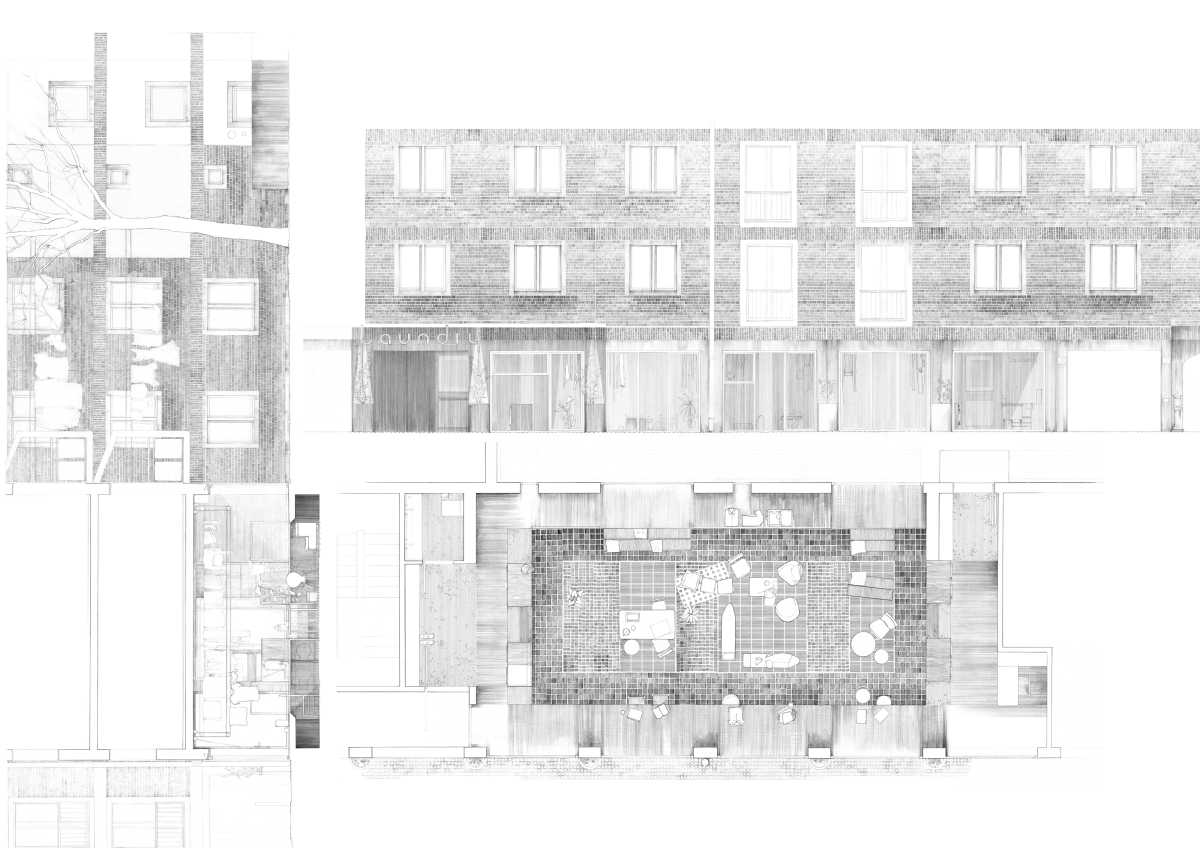the laundry room
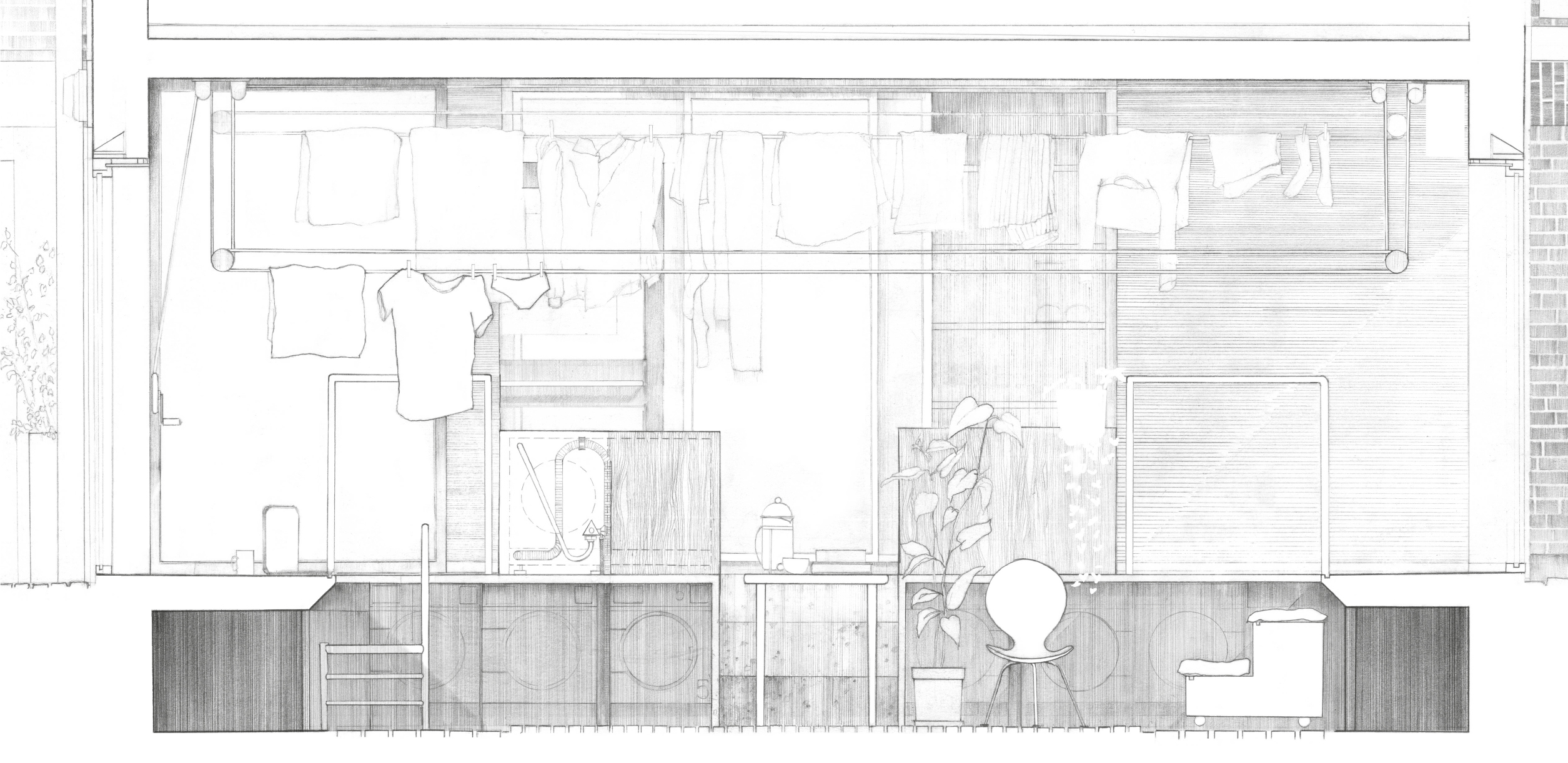
To create more space within existing social housing apartments, the housing association needs to accommodate some of the secondary functions, such as the laundry room, elsewhere. To encourage residents to use the laundry room, it should be designed as a place for social interaction.

A great number of the processes by which our societies and cities are shaped take place within domestic interiors. This project explores the domestic aspects of cities—everything related to the human home and habitat, the scale of houses, people’s private universes, and the things that are usually hidden and personal.
What happens within domestic interiors often reflects upon the surroundings—on the city and its public squares. Conversely, the urban fabric also influences ways of living. These two scales are deeply intertwined.
The social housing buildings (FSB) form a significant part of the area's genius loci. To understand how these apartments are inhabited, I visited them.
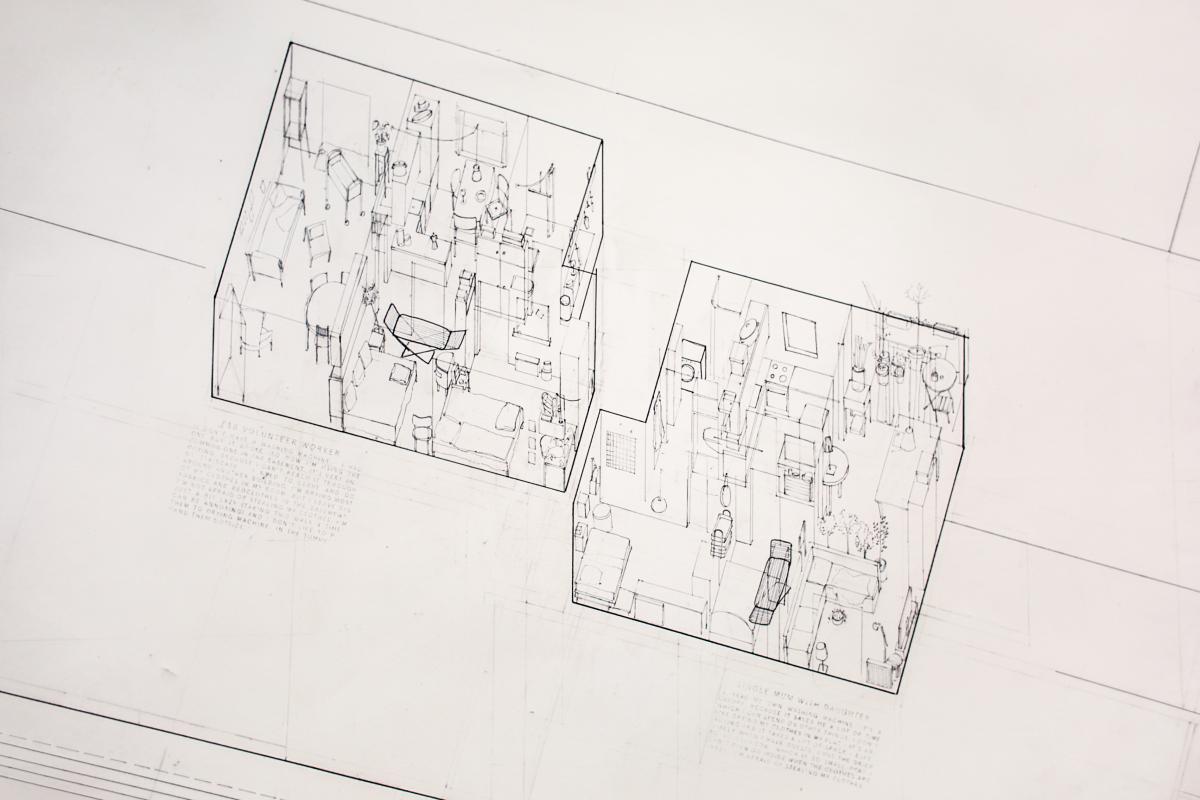
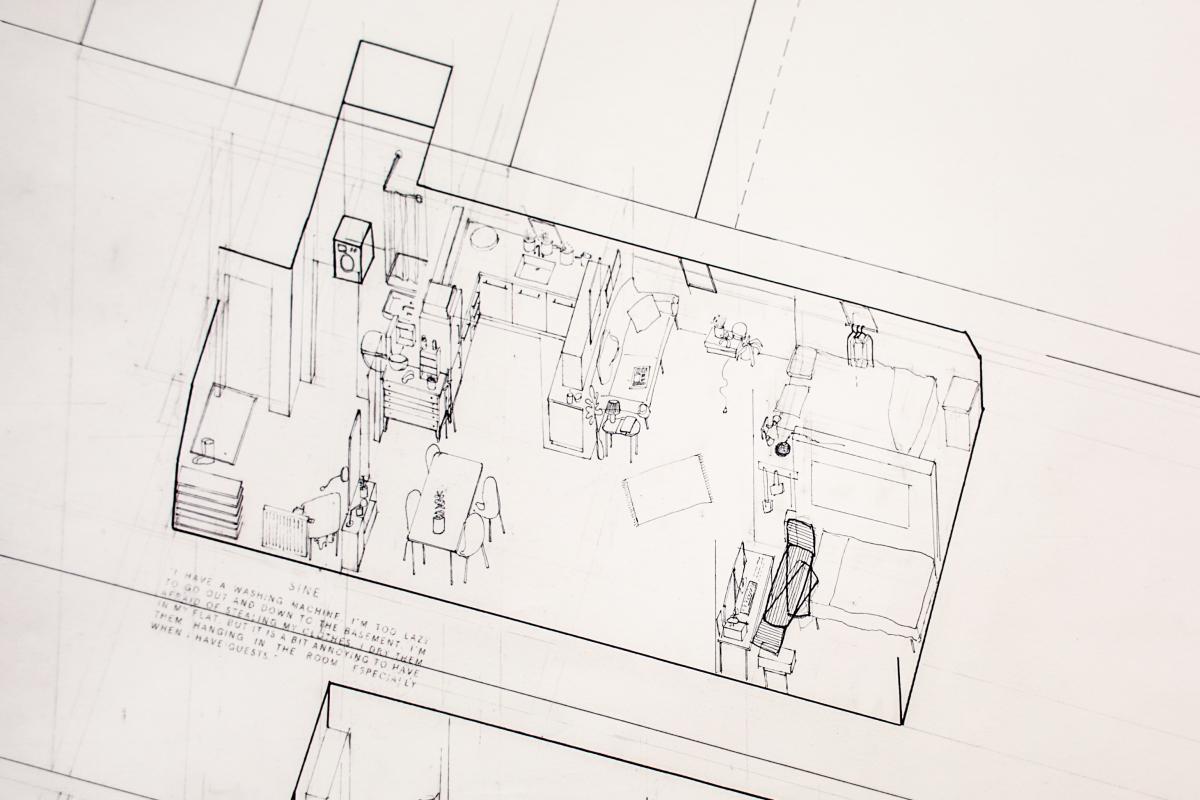
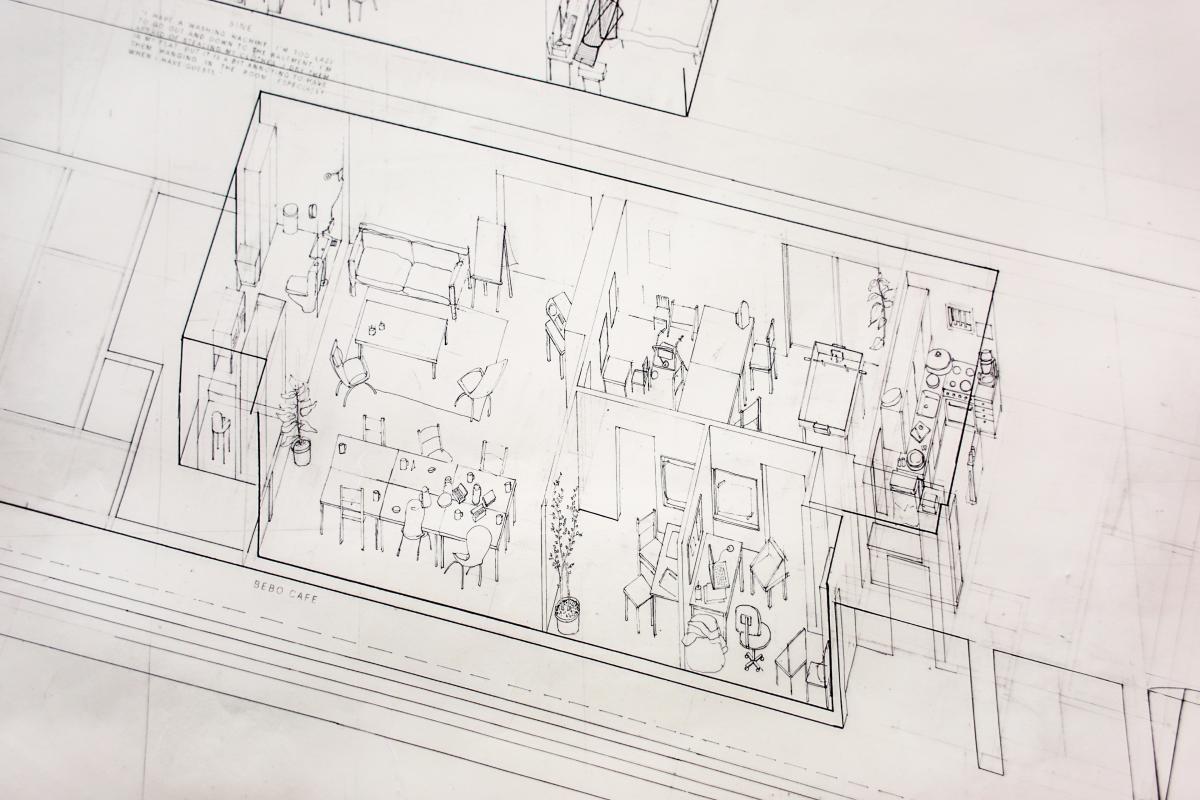
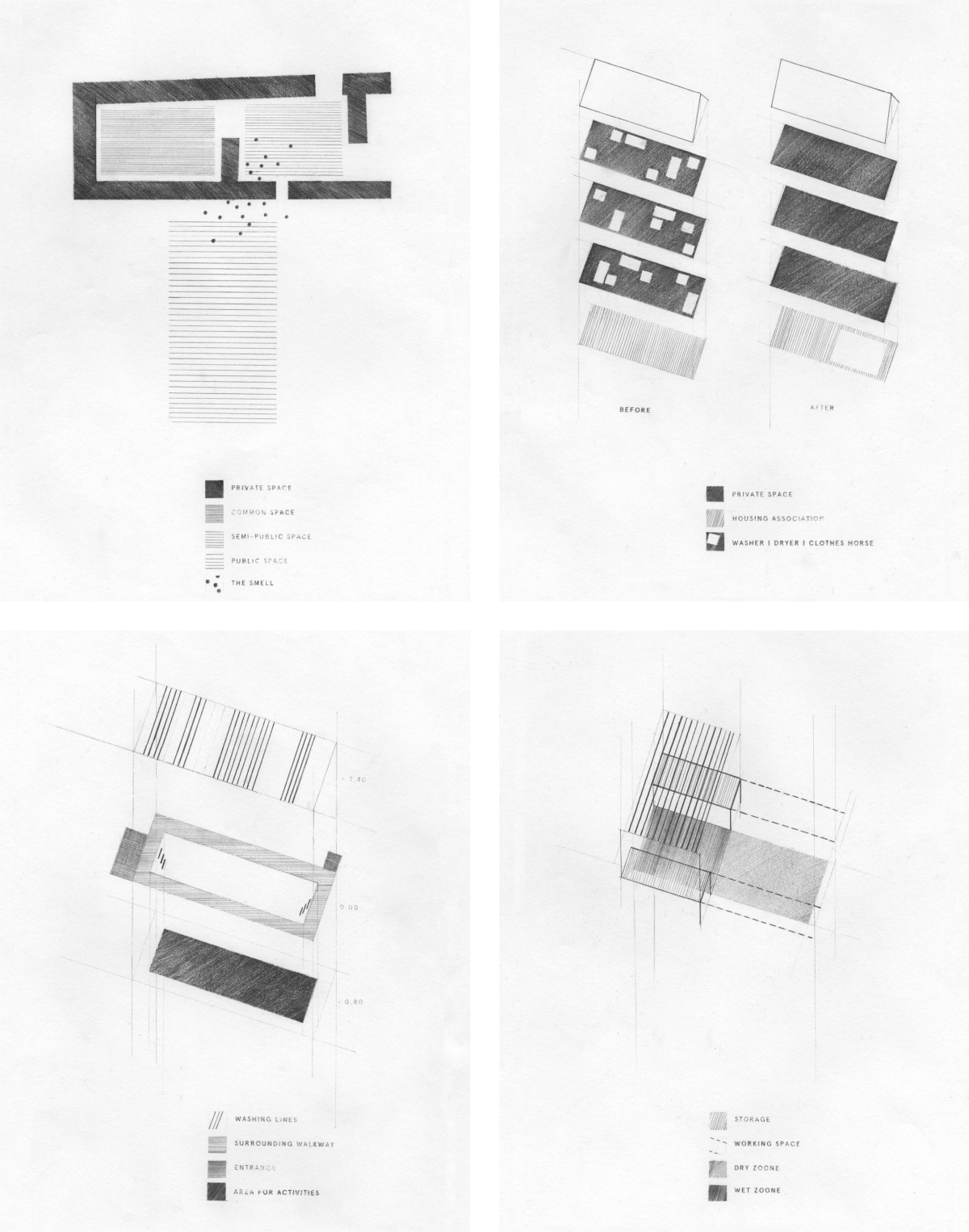
Locating the laundry room on the ground floor makes it more accessible, appealing, and even slightly commercial. Positioned between semi-public and public spaces, it remains visible and connected to the outside. The scent of laundry can even be detected from the street.
By excavating the existing basement, sufficient space is created for washing lines and activities beneath them. Laundry should often be carried out in a room dedicated to that purpose. It is a ritual that spans generations, cultures, and genders—one that has been practised for thousands of years. It was important to reflect on this tradition and design a space that fosters social interaction and communal gatherings.
Unemployed residents of the FSB housing could be employed to maintain and manage this shared facility, offering both a service to the community and a source of local employment.
